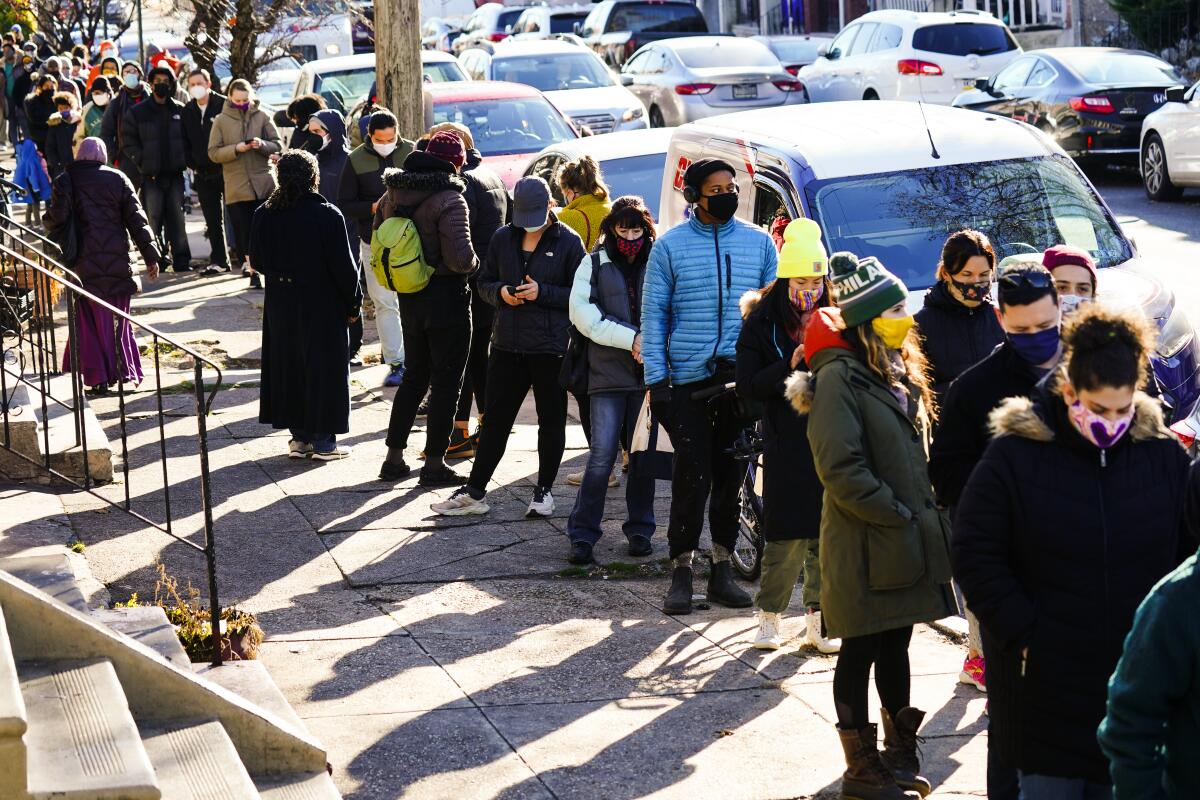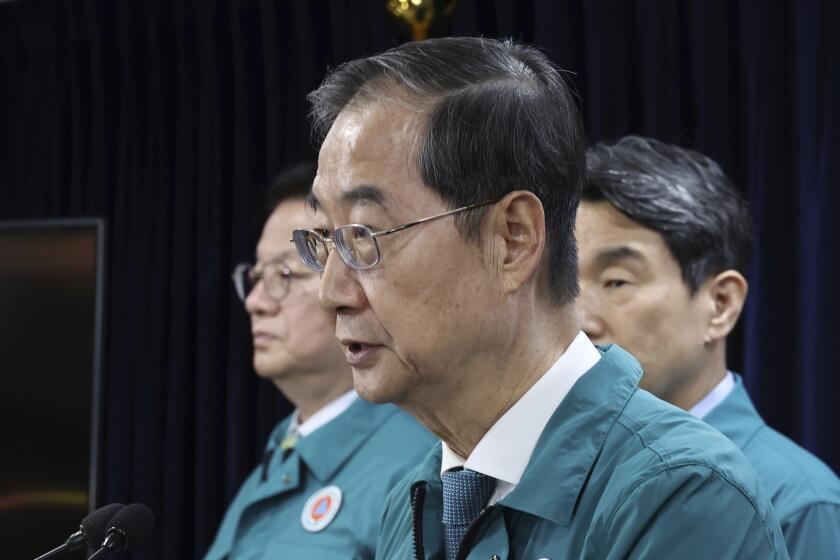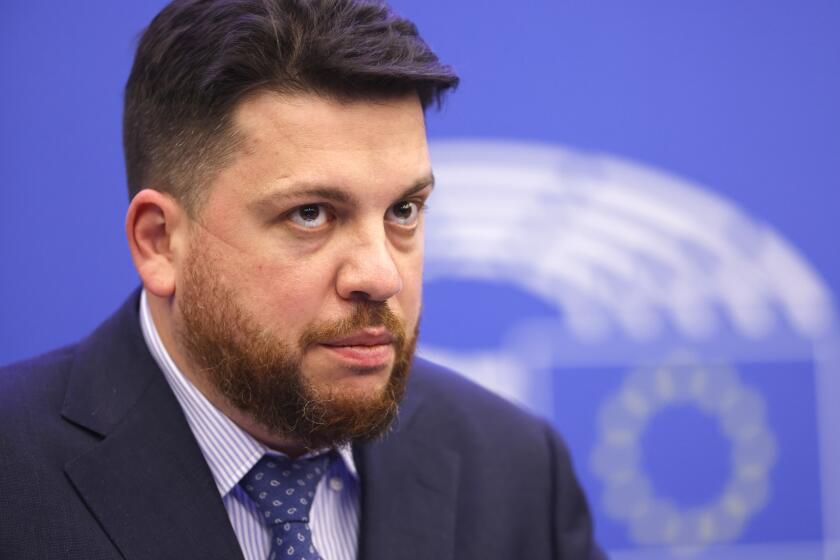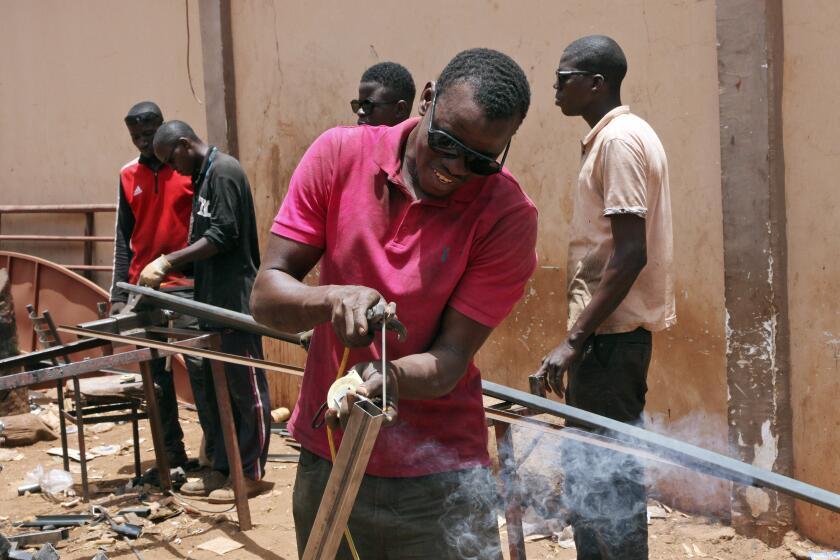To fight Omicron, Biden plans aid from military and 500 million tests

The president is set to unveil his initiatives, which also include creating new federal testing sites and deploying federal vaccinators, in a speech on Tuesday
WASHINGTON — President Joe Biden will announce new steps on Tuesday to confront a staggering surge in coronavirus cases, including readying 1,000 military medical professionals to help at overburdened hospitals, setting up new federal testing sites, deploying hundreds of federal vaccinators and buying 500 million rapid tests to distribute free to the public.
The measures, outlined to reporters Monday night by two senior administration officials who spoke on condition of anonymity, come as coronavirus caseloads are rapidly rising around the country, particularly in the Northeast, fueled by the highly infectious new omicron variant — just as Americans prepare to gather for Christmas.
The 500 million tests that the administration intends to purchase will not be available until January, the senior officials said, adding that the government intends to create a website where people can request that tests be sent to their homes, free of charge. It was not immediately clear where the tests would come from.
The plan for new federal testing sites will debut in New York City, where several new sites will be running before Christmas. And Biden intends to invoke the Defense Production Act, officials said, to accelerate production of tests.
The plan has a more urgent tone than the winter pandemic strategy that Biden announced three weeks ago at the National Institutes of Health, just days after the new variant was discovered in South Africa. At the time, he promised that the 150 million Americans with private health insurance would be able to get reimbursed for at-home COVID-19 tests starting in mid-January, said his administration would improve access to booster shots and imposed new testing requirements for international travelers.
But that plan — and Biden’s broader response to the omicron variant — has drawn criticism from public health experts, who say the president has focused too heavily on vaccination as his central strategy. Many have called on him to be more aggressive about testing as a means of slowing the variant’s spread — including possibly sending rapid tests to the homes of every American, free of charge.
Since Biden announced his winter strategy, the omicron variant has exploded; the Centers for Disease Control and Prevention reported Monday that it has raced ahead of other variants and is now the dominant version of the coronavirus in the United States, accounting for 73% of new infections last week.
“We have to acknowledge the reality that unfortunately, with a heavy heart, the virus is in charge and we need to take back control, and the only way to do that as a society is to test and isolate, test and isolate, repeat, repeat, repeat,” said Mara Aspinall, an expert in medical diagnostics at Arizona State University.
Biden was himself exposed to the coronavirus late last week but has tested negative, White House officials said Monday. With Americans already jittery about their holiday plans, he will try to reassure the nation while reminding people, yet again, that their best defense against COVID-19 is to get vaccinated and, for those who are eligible, to get booster shots.
The White House is trying to avoid talk of lockdowns at all costs, and, to the consternation of some, has stopped short of urging people to cancel travel plans, avoid public transportation and the like.
“This is not a speech about locking the country down,” Jen Psaki, the White House press secretary, told reporters earlier Monday. “This is a speech outlining and being directly clear with the American people about the benefits of being vaccinated, the steps we’re going to take to increase access, increase testing, and the risks posed to unvaccinated individuals.”
But Biden will also acknowledge that the shape of the pandemic is shifting, the officials said. Breakthrough omicron infections are common, though scientists believe that the vaccines will still provide protection against the worst outcomes. Many fully vaccinated and boosted people who are getting infected are experiencing mild symptoms or none at all.
Biden will say that if people are vaccinated and follow other public health guidelines, including wearing masks in public places, “they should feel comfortable celebrating Christmas and the holidays” with their families, one of the officials said.
But beneath those notes of assurance from the president is deep concern among his advisers — and public health experts — about the ability of the nation’s hospitals, which are already under great strain, to withstand an omicron surge. Even if the variant ends up causing less severe disease and a relatively low percentage of those infected need to be hospitalized, experts say, the explosion in cases means it is still possible that hospitals will become overwhelmed.
“That’s the big concern,” said Dr. Marcus Plescia, the chief medical officer of the Association of State and Territorial Health Officials. “If there are a lot of people getting sick, even if only a small portion of them are getting severely ill, that could still be a huge number of people.”
Biden intends to direct his defense secretary, Lloyd Austin, to “ready an additional 1,000 service members — military doctors, nurses, paramedics and other medical personnel — to deploy to hospitals during January and February, as needed,” according to a fact sheet prepared by the White House.
At the same time, Biden will announce that six federal emergency response teams, with more than 100 health professionals and paramedics, will deploy immediately to six states: Michigan, Indiana, Wisconsin, Arizona, New Hampshire and Vermont. Already, 300 federal medical workers have been deployed since omicron was discovered in late November.
Biden will also direct the Federal Emergency Management Agency to work with hospitals across the country to make plans to expand capacity. FEMA will also stand up new pop-up vaccination clinics, the officials said, to handle hundreds of additional vaccinations per week.
The government is also sending ventilators to the states — last week, officials said, it sent 330 — and will have hundreds of ambulances and emergency medical teams, overseen by FEMA, at the ready “so that if one hospital fills up, they can transport patients to open beds in other facilities,” according to the fact sheet. It was not clear who would staff those teams, but the fact sheet said that even now, “30 paramedics are heading to New Hampshire, 30 to Vermont and 20 to Arizona, and 30 ambulances are headed to New York and eight to Maine.”
The White House knows that the coming weeks — which one infectious disease expert, Michael Osterholm, has predicted will be a “viral blizzard” — will be a test of Biden’s presidency. In announcing his winter pandemic strategy earlier this month, the president said he was “sparing no effort, removing all roadblocks to keep the American people safe.”
“We’re going to fight this variant with science and speed, not chaos and confusion,” the president said then.
But as omicron took hold at lightning speed over the past few weeks, the administration’s approach seemed almost low-key, with the president leaving most messaging about it to his COVID-19 Response Team and its data-focused briefings.
Plescia, of the state health officials association, said he would especially like to see Biden use his platform to exhort governors and mayors to reimpose the mask mandates many have abandoned.
“I think he needs to prepare the public for the fact that we may have to be more aggressive,” Plescia said. “So far the message is we’re not doing stay-at-home orders, but I think the next thing to do would be to get much more aggressive with mask ordinances. The president has a lot of influence, and it would be maybe good to hear a little bit more of that.”
This article originally appeared in The New York Times.
Copyright: © 2021 The New York Times Company
Top headlines by email, weekday mornings
Get top headlines from the Union-Tribune in your inbox weekday mornings, including top news, local, sports, business, entertainment and opinion.
You may occasionally receive promotional content from the San Diego Union-Tribune.



